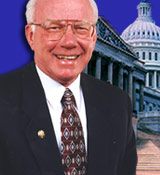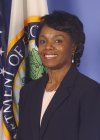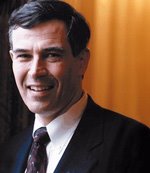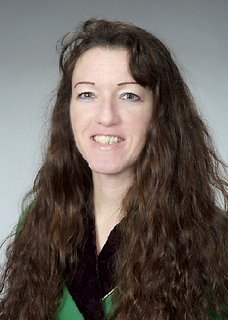SWE Congressional Briefing - Diversity in the Workforce
 |
 |
 |
| From top to bottom: Rep. Ehlers, Asst. Sec. Monroe, Rep. Holt (photos courtesy of U.S. House of Representatives and Dept. of Education) |
The Society of Women Engineers sponsored a lunchtime briefing at the Longworth House Office Building on Capitol Hill on Tuesday, September 26. Senate and House staffers, along with engineers, scientists, and affiliates of several non-profit engineering organizations, were invited to participate in the discussion entitled "Are More Women and Diversity Needed in the Science, Technology, Engineering, and Mathematics (STEM) Workforce?"
Speakers included Dr. Johanna Sengers, Scientist Emeritus at the National Institute of Standards and Technology, Stephanie Johnson Monroe, the Assistant Secretary for Civil Rights at the U.S. Department of Education, Congressman Vernon Ehlers (R-MI), and Congressman Rush Holt (D-NJ). Both congressmen have Ph.D. degrees in physics. The discussion was moderated by Dr. Semahat Demir, Director of External Affairs at the Society of Women Engineers.
Congressman Ehlers has been preaching about diversity in scientific fields in the United States for years. He stated that every other nation involved in scientific work has a large proportion of women scientists. "We must change our culture." Ehlers defined the need to make STEM professions more attractive to women by providing STEM role models. He raised the concern that high school counselors are discouraging girls from studying math. Ehlers concluded by entreating the STEM professionals in the room to talk to their employers about the importance of getting more women and girls interested in math.
Dr. Sengers gave a presentation on recent work by the InterAcademy Council on "The Under-Representation of Women and Minorities in STEM Fields." Not only did Dr. Sengers detail statistics to make her case, she also discussed why women and minorities are important to STEM fields – they are an untapped pool of talent that can be called upon to solve our nation's critical technical problems. Diversity provides a wider perspective and ideas for new approaches. Additionally, women are often the consumers of retail products, so it is natural for women engineers to develop solutions that fit women's needs.
One example of this was a team of female engineers at Volvo. They developed a car designed for women with small children, giving the mother easier access to load children and groceries into the car.
Dr. Sengers listed several reasons for women's underrepresentation in STEM fields, one of which was persistent stereotypes about women's role in life. When asked to comment on the paradox between forming a team of female engineers to design a product for women with children and stereotypes about women's role in life being a reason for underrepresentation, Dr. Sengers – who has no children – stated, "I do not believe there is a paradox." She also listed long hours, versus a work-family balance, as a reason for underrepresentation. There was no mention of the stereotypes of men's role in life regarding child-rearing, with the exception of a female geologist in the audience who mentioned that companies should be required by law to grant maternity leave and included paternity leave as a side comment.
Assistant Secretary Monroe discussed the "Action Plan from the First National Summit for the Advancement of Girls in Math and Science." She mentioned a long list of worrisome statistics about math and science education in the United States. Only five percent of parents say that they would encourage their children to pursue careers in math or science. Additionally, most females cannot see themselves as engineers or scientists.
Four major actions were developed from the National Summit, which have become Secretary of Education Margaret Spellings's top priorities: improve classroom practices, identify and strengthen out-of-classroom activities, empower parents to encourage girls to take math and science, and to improve public awareness.
Congressman Holt is very concerned that the United States is "underinvesting in research in every sector because people don't understand what's needed in the engineering economic infrastructure." He says the United States is a victim of the Sputnik success of recruiting scientists and engineers in the 1950's. As a result, “eight percent of the population was told, ‘engineering is not for you’, which created a bifurcated culture of those afraid of numbers and those who are not." Now “math and science is a conversation-stopper” within our culture, as opposed to India or China where their cultures treat engineering as a very glamorous and highly respected profession. "Before we can talk about minority underrepresentation, we have to convince Americans that [math and science] matters."
This article appeared in the November newsletter for the Baltimore-Washington Section of the Society of Women Engineers and the Winter issue of "Visions," the state-wide newsletter for the American Association of University Women of Virginia.


0 Comments:
Post a Comment
<< Home